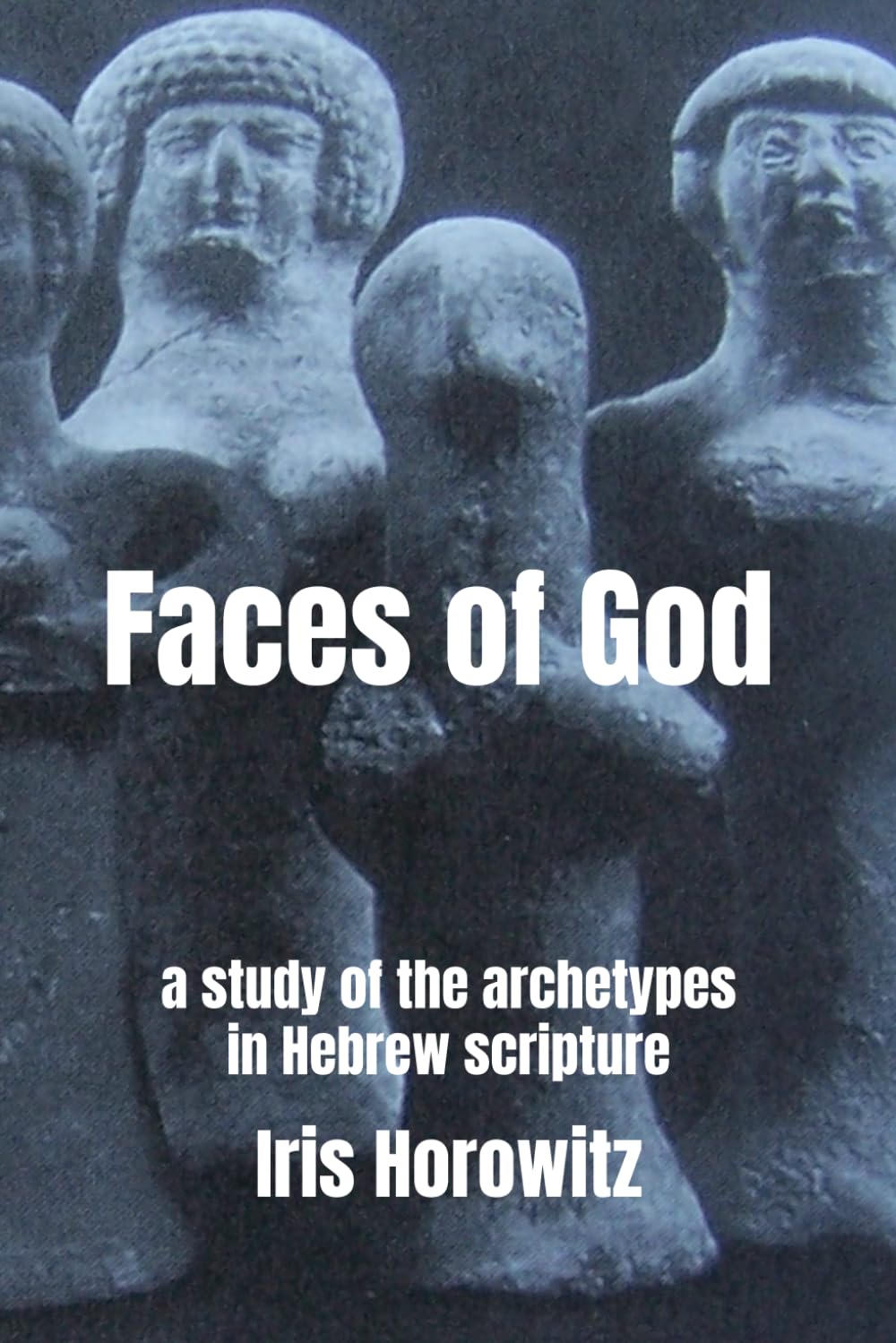
Faces of God
Canaanite mythology took on renewed life in the Hebrew Bible to the same degree that Classical mythology did in Milton’s Paradise Lost. This study uses Mircea Eliade’s methodology to uncover these significant forms. A work of inestimable value to anyone interested in the Biblical world, or even in the Kabbalah, for these same archetypes flourished even more luxuriantly in the mystical novel which is the Zohar.
excerpt from the book
As the ceaseless denunciations by the prophets make clear, the worship of the Canaanite goddess Asherah provided strong competition for the worship of Yahweh. She was venerated in the Northern Kingdom for as long as there was a Northern Kingdom (until 722 BCE), and beyond—the image of Asherah that Jeroboam (who established the Northern Kingdom of Israel in 926 BCE) set up, was still there for Josiah of the southern kingdom, Judah, (who reigned from 639-609 BCE) to burn three hundred years later.
In Judah, Asherah was introduced into the Temple by the wife of Rehoboam (Solomon’s son) and periodically removed or restored by successive kings. Calculating from the Bible’s obsessive tally of idolatrous versus pious kings, it seems that for the 370 years from her introduction (928 BCE) to the Temple’s destruction (587 BCE), for two thirds of the time, that is 236 years, Asherah was present in the Temple of Yahweh. The image of Asherah stood in the Jerusalem Temple, at the gateway leading to the altar: it was the the famous “Image of Jealousy” of which Ezekiel complains in his eighth chapter.
The prophets and historical writers of the Bible fulminate continuously against the worship of Asherah the “Queen of Heaven” (that is, consort of the storm-god Baal), which took place, by their account, “on the hilltops and under every spreading tree.” The mentions are too numerous to cite.
Naturally a goddess of such prominence was not without influence on the Hebrew religious imagination. Asherah was drawn on by the prophets to personify the nation and fertile land. In imitation of Canaanite Asherah, Israel was seen as the spouse of the sky-god Yahweh.
Hosea (who lived in the late eighth century BCE) tells us, in his remarkable book of prophecies, that he married a whore to symbolize God’s marriage to Israel (who had “played the harlot” with foreign gods). But Hosea is not bizarrely original in his plan of magically acting out the affairs of gods. Such “sacred marriage” ceremonies took place throughout the Ancient Near East as an ordinary part of a nation’s ritual life. The king and high priestess coupled to symbolize and magically encourage the sky-god’s fecundating embrace of the earth.
The union between Hosea and his wife was clearly intended as an act of magic similar to this union of Canaanite king with a priestess. Hosea’s marriage formula is:
And I will espouse you forever:
I will espouse you with Righteousness and Justice and with Goodness and Mercy.
And I will espouse you with Faithfulness; then you shall be devoted to the Lord. In that day
I will respond—declares the Lord—
I will respond to the sky
and it shall respond to the earth,
and the earth shall respond
with new grain and wine and oil . . . (Hosea 2)
In the Canaanite epic material there is an account of Baal inviting another fertility goddess, Anat, to his “pleasant place” atop Mt. Tsaphon. Baal’s exhortation to Anat,
Pour peace into the heart of the earth,
rain love on the heart of the fields.
is exactly parallel to Hosea’s formulation.
The tree-identified deity Asherah also provided a more symbolic way to represent Israel—as a plant. Israel is described in Psalm eighty as a fruit tree that God plucked from Egypt, which has grown till its shade covers mountains while its boughs stretch as far as the Mediterranean and the Euphrates. In the twenty-seventh chapter of Isaiah Israel is called God’s “Vineyard of Delight.”
In the third century BCE, Judaism was competing with Greek philosophies, and presented its own tradition of wisdom in the shape of the goddess Asherah. Though the figure bears the name Wisdom, the imagery is that of Asherah.
It is Wisdom calling,
Understanding raising her voice.
She takes her stand at the top of high places, by the wayside, at the crossroads.
She shouts at the gates, at the entrance of the city . . .
Happy is the man who listens to me,
coming early to my gates each day,
waiting at my doorposts. (Proverbs 8)
I have already noted the prophetic denunciation of Asherah worship “on the hilltops and under every spreading tree,” and Ezekiel’s statement that the image of Asherah stood in the Jerusalem Temple at the gateway leading to the altar. The Greek fertility goddess Hecate, a close parallel to Asherah — and like Asherah frequently depicted as a tree—was venerated at all the places listed in our quotes from The Book of Proverbs: hilltop, crossroads and gateway.